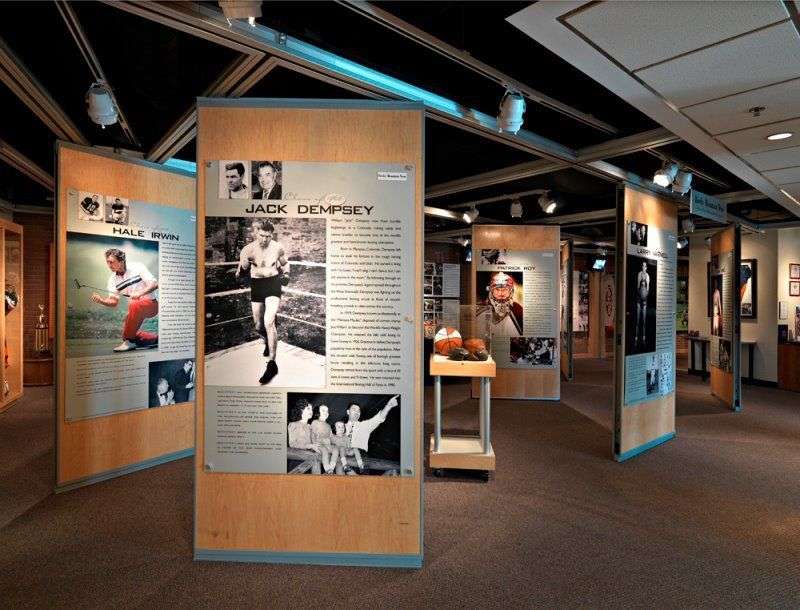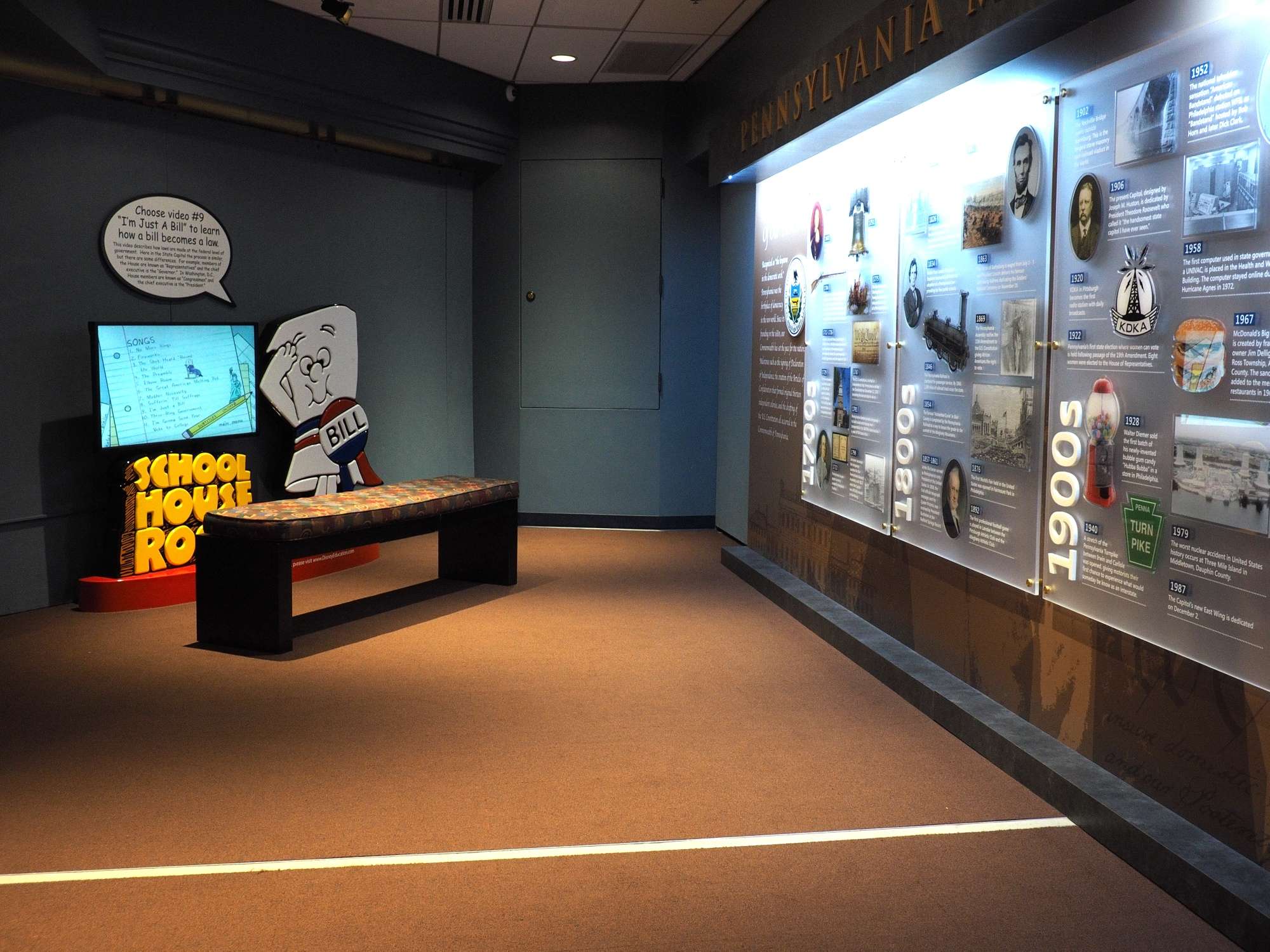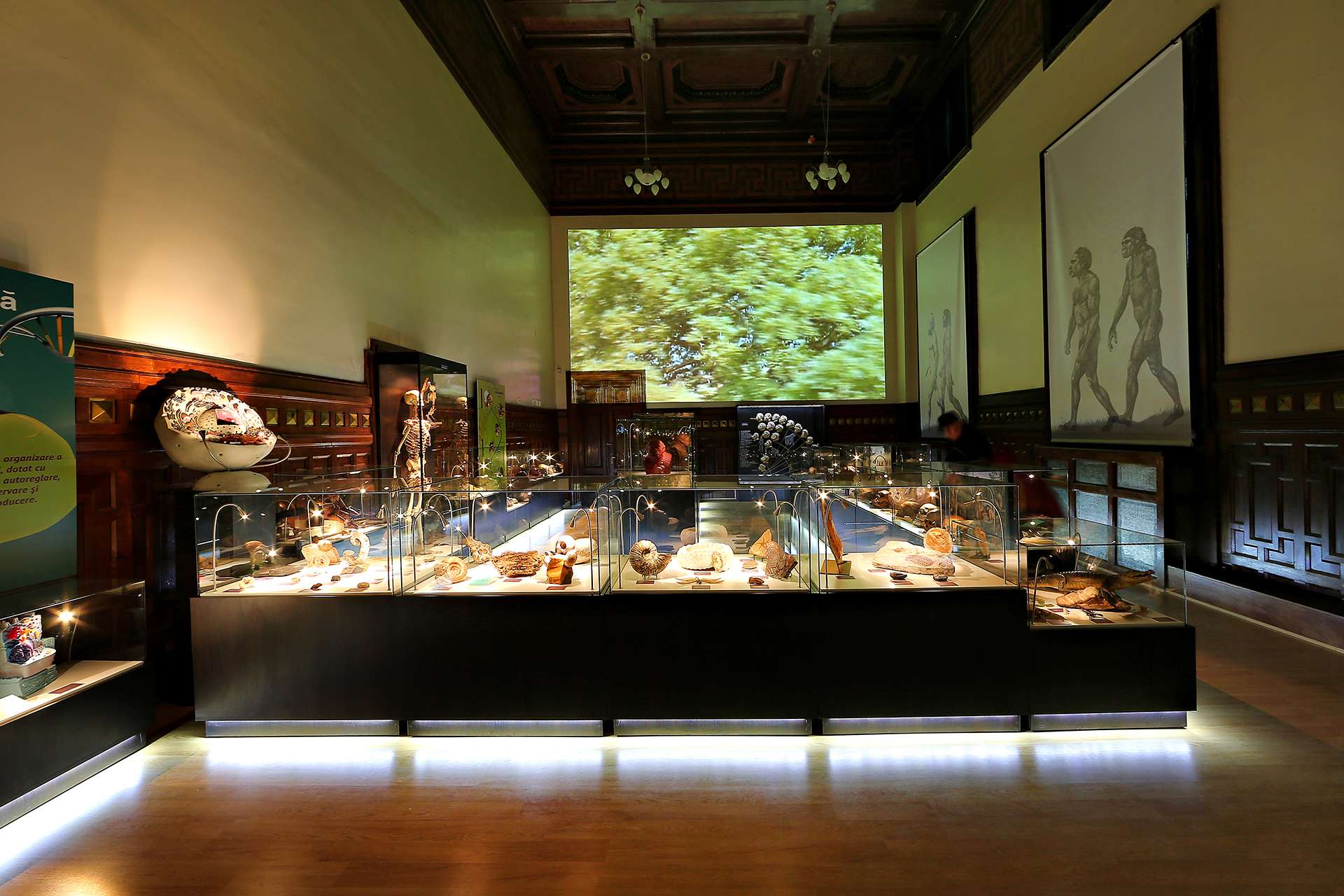Defining A Path: Telling A Story
Since museums deal with history, it is important to follow a timeline and incorporate it into your design. By following a chronological order, it enables the visitors to walk through the museum, taking information exhibit by exhibit, story by story. It is good to design all sections according to the era so that the perceiver gets a full feel and can absorb the whole story.
Tell Visitors An Engaging Story
Every museum exhibit should tell a story, rather than being a random assortment of displays. Whats the larger message you want to convey to visitors? Always design with the big picture in mind when youre planning a museum exhibition. Your story should naturally guide visitors through the physical space of your exhibit by keeping them engaged with your story.
Visitors should leave your museum with a deeper understanding of the subject matter than they had when they walked into your doors. They should also be able to easily share with friends what they learned and leave wanting to find out even more.
Museum Exhibition Design Part I
Mark Walhimer Exhibition Design
Museum Exhibition Design Part I
You May Like: Museum Studies Undergraduate Programs Online
In Much Of Your Writing You Talk About The Big Idea That Every Exhibit Should Try To Convey What Is That About And Why Do Some Exhibit Designers Seem To Overlook It
The Big Idea is the answer to the question, What is this exhibit about? Visitors generally walk through exhibits quickly and incompletely, so the Big Idea cant appear just once in the introductionit has to be a thread that weaves its way through the whole thing, giving people momentum, and moving them in the right direction.
The Big Idea is also an important tool to keep the writer, the curator, and the designer working together. What visitors learn at one station is going to resonate with something they learn at another one, so that as they move throughout the exhibit, its building that gestalt as opposed to presenting a totally independent idea one after anotherbecause after 25 new ideas, youre just ready to quit.
If, at the end of the exhibition, people cant tell me what the museum was hoping to accomplish, and its clear that it didnt really penetrate them or prompt any depth of thought or emotion, then the exhibit has failed. Ill often ask open-ended questions like Whats one new idea youve taken away today? or Finish the statement: I didnt know. or The exhibit reminded me of.
Sometimes Ill get answers that are moving and even spiritual: The exhibit reminded me I really need to do something Ive been putting off or It reminds me of God and nature.
Those emotional sort of responses show that youve made a real connection.
This Is 2020 Physical And Digital Environments Are A Fact

In more and more of our projects, we see a larger percentage of the production budget allocated to media. Traditional and interactive media can provide invaluable depth to exhibition subjects as well as opportunities for transmedia storytelling, thus expanding the exhibition into the spheres of the web or social media, augmenting audience outreach and creating potential new partnerships for a museum. A good creative brief should include strategic budget allocations from the get go.
Also Check: Indianapolis Children’s Museum Phone Number
How To Design A Museum: The Making Of Londons New Design Museum
The art of designing a museum is one filled with expectation and promise: a unique challenge for designers. Its been a rare opportunity for the talents of Fernando Gutiérrez, Morag Myerscough, Cartlidge Levene, OK-RM and Hato to define the character and personality of this new incarnation of the Design Museum in South Kensington. The project has seen them create the identity, the wayfinding and signage system, its inaugural exhibition, the Beazley Designs of the Year show and its permanent display. As expected, with a new location comes a new aesthetic, so what should a museum of design look and feel like in 2016?
Design Museum interior. Credit: Gareth Gardner
Design Museum: Signage and Wayfinding, Cartlidge Levene
Design Museum: Signage and Wayfinding, Cartlidge Levene
The identity for the Design Museum is crisp, clean and acts as the nervous system of the museum. The job was given to Fernando Gutiérrez and his London-based studio of the same name, which has an international client list and a talent for creating identities, exhibitions and signage. The initial brief given to Fernando was to create an identity for the museum that is about growing up and not growing old, and to design a flexible base.
Design Museum: Signage and Wayfinding, Cartlidge Levene
Design Museum: Signage and Wayfinding, Cartlidge Levene
Design Museum: Designer Maker User show. Credit: Gareth Gardner
How To Set Up An Art Exhibition
This article was co-authored by wikiHow Staff. Our trained team of editors and researchers validate articles for accuracy and comprehensiveness. wikiHow’s Content Management Team carefully monitors the work from our editorial staff to ensure that each article is backed by trusted research and meets our high quality standards.There are 15 references cited in this article, which can be found at the bottom of the page.wikiHow marks an article as reader-approved once it receives enough positive feedback. This article received 18 testimonials and 100% of readers who voted found it helpful, earning it our reader-approved status. This article has been viewed 574,013 times.Learn more…
Whether youre displaying your own work or that of other artists, holding an art exhibition is a uniquely enriching experience. However, it can be a real challenge to bring together so many different elements in a cohesive and meaningful way. Thats why when youre staging an art exhibition of your own, its essential to have a plan. Once youve chosen a theme for your exhibition, you can begin taking submissions from interested artists, select an appropriate venue for the event and build marketing buzz that will allow your collection to be seen and appreciated by as many people as possible.
Read Also: Hotels Near Museum Of The Bible In Washington Dc
Planning The Affordable Museum Exhibit: 9 Tips
As curators and exhibit developers you understand well that you cant always get what you want. But if you try you can often get what you need. When we plan our exhibits, desires always exceed our means. Seeking to help, we offer the following inexpensive ways to design exhibit features. This list of tips is based on years of experience designing exhibits for large and small institutions. They are the ideas that we have found to be the most useful. With a little creativity the solutions you can find are almost unlimited, but these are a good starting point and are easily adapted to specific gallery conditions.
The main criteria we used to select the best tips are how effective they were in improving visitor experience, facilitating installation, and simplifying budgetary decisions. We also assumed you are interested in inexpensive methods of producing exhibits. In all cases there are more sophisticated ways of producing the same item but we focus on doing the most with limited resources.
The Museum of Chinese in America exhibit on Chinese food. The big idea is a banquet table decorated with ceramics that represent different regional cuisines.
The Museum of Chinese in America exhibit on Chinese food. The big idea is a banquet table decorated with ceramics that represent different regional cuisines.
Museum of Jewish Heritage exhibit on the poet Emma Lazarus. Her handwriting was printed on a translucent curtain that encircled a small video theater.
Incorporate Graphic Design Andtechnology
A great way to attract visitors towards your exhibitis by incorporating graphic displays and technological features into it.Interactive VR kiosks, posters, display monitors and mobile apps are some ofthe ideas. This will certainly make your exhibit more interesting, but it willalso make the young among the visitors feel at home.
VR or Virtual Reality is trending these days in the gaming world. However, it is also being used for variety of other purposes, such as advertising, corporate training, therapy etc. This innovation can be a great asset to your exhibit as well. You can use it to create exciting and immersive experiences for the visitors. This is something that an entire family can enjoy.
Don’t Miss: West Hartford Children’s Museum
Most People Will Read The Shortest Paragraph First Regardless Of Where It Is In The Layout
Exhibit designers also have to remember that even the most diligent visitors arent stopping at every station and reading every label. As soon as visitors read a label that assumes theyve read the one before, they end up confused and frustrated. So if youre telling a story through the exhibit, you have to do it knowing that people may only experience 50 percent of the exhibit or less.
And last, many labels start with the backgroundwhere the artist was born, what significant thing happenedand its not until you get to the very end that this huge lightbulb goes off and the viewer thinks Oh, this is what Im supposed to see.
Good exhibit writing actually flips the rules: Start with the specific and work to the general start with the present and work to the past. Often that means literally and figuratively taking out the scissors, cutting out the last paragraph, and putting it at the top.
Photo by Riccado Bresciani
How To Design A Museum Exhibition Logo: My 3 Step Process
Last month, I gave the 101 of Exhibition Title Lockups what lockups are and what pieces make up a whole mark. Here, Im sharing my process on how to design a museums exhibition logo. The questions and steps listed below are what I use every time I approach a new exhibition branding design.
Lockup the final form of a title design, with all of its elements. For example, the final lockup version of your title will include exhibition title, subtitle, any supporting graphic elements, as well as main sponsors or funding program, and museum name or logo.
Also Check: Falcon Field Mesa Az Museum
Develop Specific Visitor Personas
You cant create an engaging museum exhibit if you dont know who your target audience is. The best way to define your audience is to create unique visitor desires. Based on your past experience, determine which types of people are most likely to visit your museum. What do they want from their museum-going experience, and what do they care about? Once youve identified their common traits and interests, youre ready to start designing.
Divide Your Exhibits Into Small Sections

If your exhibit is large in size, then breaking itinto sections would be an interesting way of displaying your artifacts. Doingso will make it easier for the visitors to digest the content in your exhibit.For instance, if youre telling the story of a sea journey, you can divide yourexhibit on the basis of the major milestones by having copies of the modelsailing ships in each section.
Don’t Miss: American Revolution Museum In Philadelphia
Who Is The Exhibition For
Think about who will be in your space. Odds are you want to appeal to the largest group possible, but try to focus on a core group that would respond most to the content of the exhibition.
Age can be the most common difference we can introduce to design. An exhibition targeting children may be more playful than one that focuses on engaging with adults.
You may also want to keep in mind the level of familiarity a visitor may have with your museum or the exhibition subject matter. Are you expecting a lot of newbies for this show? That could affect how you want the title lockup to look. Dont underestimate the heavy-lifting your logo can do in prepping visitors before they even enter your space.
Create A Linear Flow Through The Museum Exhibit
Just as most stories are best told in a linear, chronological manner, so are museum exhibits. You want to design the experience to walk visitors through history. Its important to create a sense of time and place in every part of the display. This is especially true when creating an exhibit about history, inventions, or evolution of the natural world. But you can do more than arrange the display along a timeline. For compelling museum exhibit design, use exhibit graphics, labels, signage, sounds, and interactive technology as visual cues. These can help you completely immerse your visitors in different time periods.
Recommended Reading: New England Museum Association Jobs
You Cant Please Everybody Its A Fact
Its tempting to want to create an exhibition that is everything for everybody. Weve come to realize that the most interesting projects are those that do more of one thing and less of another. An exhibition is a creative act, and focus and constraints gives it strength. Memorable exhibitions are those where the list of what is not shown is as important as what is shown. A good creative brief should include what the project will not be. Targeting specific audiences can also help give an editorial edge to an exhibition, and will not necessarily mean that other audiences will not enjoy it.
The Art Of Storytelling
A museum exhibit should make people feel like theyvetraveled through time into the past. The best way to do this is by telling astory through your exhibit. For instance, if youre displaying antique model ships,you can build your exhibit around a famous medieval naval battle. You can evenhave subplots within your story to augment it.
The best way to tell a story is in a linear orchronological manner. So, you must arrange your exhibit in a way that makes thevisitors have a sense of time as they walk through history.
Don’t Miss: Van Gogh Metropolitan Museum Nyc
Establishing A Connect: Interactive Display
After studying the genre, it is good to decide the scale of interactivity for your museum. Do you want visitors to touch the display unit or do you want to keep your artifacts behind a glass? This is where the breakthrough of technology also helps. You may prohibit touching of exhibits but you can make your design graphical through signs, video screens, or go as far as incorporating augmented reality. Your design should be a responsive and dynamic collection of arts and dramas of life.
Youre Creating An Experience Not A Content Grid
Many exhibition projects begin with a strong curatorial input that translates into messages and exhibition zones via a content grid. All too often however, no room is left in the creative process to brainstorm on the exhibitions content and experience with the design team and many valuable ideas can come out of this forum as well. In certain cases, approaching content and messaging from a design perspective can also bring solutions to the table that are more playful or that use various senses or involve different learning approaches. All too often this process is not valued or budgeted and interesting opportunities are not given the light of day.
Also Check: California Arts And Science Museum
How To Improve Your Museum Exhibit Design
What makes a good museum exhibit? Even exhibits with rooms full of valuable artifacts can fall flat without strategic, thoughtful design. Theres a lot of hard work and planning that goes into creating an exhibit that is functional, educational, and pleasing to the eye. Plus, exhibits have to fit into pre-existing spaces and predefined budgets. Whether youre creating your first museum exhibit design or your hundredth, the tips and ideas below will help kickstart your creativity.
Embrace Technology In Your Museum Exhibit Design

We just mentioned the exciting possibilities that gaming tech offers. Thats just one part of all the great tech you can use. Integrating technology into your museum exhibit design can help capture and hold the attention of your visitors. Technology to consider might range from interactive kiosks to video monitors, but it can even go beyond your physical display. Audio and mobile apps are an innovative way for your visitors, especially the younger ones, to learn from and interact with your museum exhibit.
Also Check: African American Museum Alexandria Va
Present Art And Artifacts In Interesting Ways
When it comes to displaying the artwork or artifacts at the heart of your museum exhibit, you can apply our same tips for innovative product displays. First and foremost, make sure the items are easily visible. For small artifacts, you can bring them into view with the usual good lighting and elevated platforms. You can also add large graphics, hanging banners, or video screens next to them. With larger artifacts, it can be striking to counter expectations that theyll be on the ground or a low platform. Instead, you can mount them to the wall or structure of your exhibit for a fresh perspective. The key is to make sure your display isnt crowded so that each artwork or artifact can make an impact.